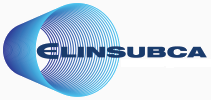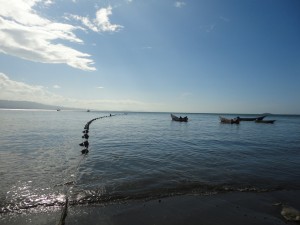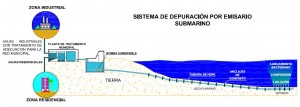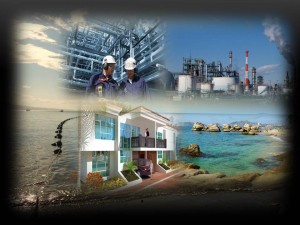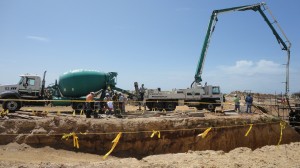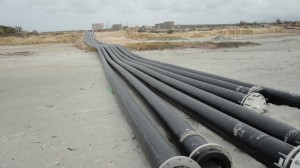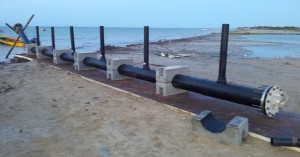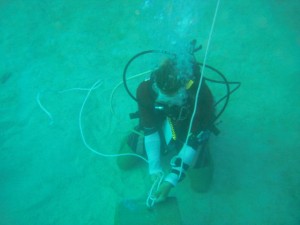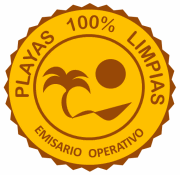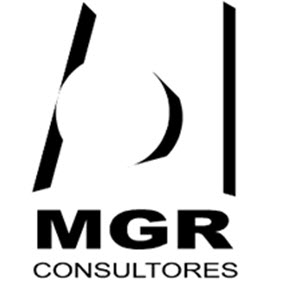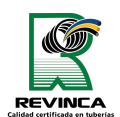A purification system for outfall – SIDES (term used by ELINSUBCA) is an intelligent solution for the treatment of both industrial wastewater and domestic, which uses the purifying capacity of the ocean to degrade the organic load contained in municipal effluents, in balance with the marine ecosystem.
Its operation can be explained by separating it into 6 main stages:
1. DESIGN SYSTEM (BASIC RESEARCH AND ENGINEERING):
SIDES design should be unique to each project, at this stage you should be considered oceanic studies: bathymetry, current dynamics, composition of the seabed and environmental studies. Consideration should be given health study of various domestic and industrial sources that produce wastewater; their wealth and their physicochemical and biological composition. Counting on these inputs is in the ability to perform hydraulic, structural and sanitary sizing calculations that will enable Debugging System for Submarine.
2. CONTROL IN THE FOUNTAIN (households and industry):
This stage includes the control should be practiced in the producing sources of wastewater which is connected to the network of municipal collectors, also the constant monitoring of the effluent before the entrance to the outfall.
In the case of domestic sources, it would be advisable to implement educational awareness campaigns network user to avoid throwing solid, oil or other toxic waste into drains, so that energy savings occur during stage pre-treatment of the effluent, which improves the efficiency of the cleaning system. Other control measures can be applied at home connections, to prevent the passage of solid network of collectors, as well as incentives for recycling campaigns that help improve the quality of domestic effluents.
In the case of industrial effluents, it should be stricter control that covers from the detailed description of the production processes in order to practice the necessary improvements to avoid the issuance of non-biodegradable waste, especially toxic or persistent elements that may cause damage marine organisms (eg heavy metals, radioactive substances, hydrocarbons, persistent organic compounds, etc.). In other words, the processes must be adequate to ensure a free effluent from non-biodegradable agents, a removal of coarse solids and fats.
Usually industries must have a permanent control of the quality of its wastewater by the competent state body, this control will determine whether the effluent produced meets the parameters established in the environmental regulations and with the variables set in the design scrubber system.
3. PRE-TREATMENT (ELIMINATION OF SOLID AND FATS):
In the pre-treatment should include a large removal of coarse solids, settleable and suspended, as well as fats effluent, in order to reduce the undesirable aesthetic impact on the receiving environment, by the appearance of floating solids, stains fat and accumulations of sediment on the seabed.
4. TRANSPORT OF EFFLUENT (OUTFALL):
The suitably treated waste water, with partial elimination of fats and solids, are conducted to the mixing zone in the receiving environment (sea, river or lake) through a pipe or outfall.
This line pipe should be designed to prevent the occurrence of failures effluent leaks that could represent a source of contamination in nearshore areas. The pipeline can be constructed in various materials, however, it is recommended to run these facilities with pipe High Density Polyethylene (HDPE acronym in English); as it provides a system capable of operating for a long time (over 60 years), economic, free from faults and without maintenance costs when it is designed correctly.
5. MIX IN THE MIDDLE RECEIVER (DIFUSOR):
At this stage effluent treatment is completed by means of natural purification capacity of the aquatic environment. Since the ocean has a steady source of energy (from the rotation of the earth) that produces continuous ocean currents and oxygenation of the huge volume of the aquatic environment. It has the ability to incorporate the effluent to this medium to be part of (or food chain) of the marine ecosystem, becoming a food source decomposers and detritus trophic organisms cycle.
Through three physical-biological processes debugging is achieved:
-
Initial dilution: effluent is conducted to the so-called mixing zone, where a mixture will occur through the discharge diffuser, which is designed to achieve high dilution in the receiving means, achieving lower effluent concentration at least 100 times (dilution of 100: 1) sustained (for example: if you have an effluent with a BOD value of 200, is will fall at least to a value of 2), and in many cases can reach higher dilutions 2000 times (2000 dilution: 1). This initial dilution through diffuser gives rise to the so-called “pen dilution”, being important for design variables: depth, density and temperature of the receiving environment.
-
Dispersal: then transport this pen will occur by the action of ocean currents that produce unadispersión effluent (or dilution far field) in an increasing water volume, achieving full integration of the food load to the aquatic environment.
-
Bacterial decay: bacterial decay refers to the death of typical wastewater effluent (causing gastrointestinal illness in swimmers who use the beaches or spas) pathogenic bacteria. This decay or bacterial death occurs from transportation effluent through the outfall and achieves greater efficiency in the aquatic environment due to the action of several factors: the ultra violet rays, salinity, heat shock and the action of organisms predators existing in the medium.
6. ENVIRONMENTAL MONITORING:
Environmental monitoring in a primary factor purification system, since it is intended to do a survey of the initial environmental conditions of the receiving environment (baseline) in the area near the mixing zone and in human use ( as beaches, spas or shellfish farming). This baseline will serve as a standard of comparison with respect to subsequent sampling, once the system is put into operation debugging. It will determine its proper functioning, discard as undesirable accumulations of sediment on the seabed and the water quality values specified in the standard for human use areas are achieved.
This monitoring provides other advantages, as it serves as an experimental source that generates valuable information for calculating future projects also could easily detect one
system malfunction, allowing the necessary demanding those responsible for the project, improvements for its smooth operation.
In conclusion, the purification system by Outfall – SIDES, is an intelligent system using the purifying capacity of the aquatic environment, incorporating the effluent as a food load in the food cycle of this ecosystem. Is a reliable, robust and economic system; able to debug large wastewater flows continuously, with an inexhaustible source of free energy that provides a dynamic current and a convenient constant oxygenation of the receiving environment.
